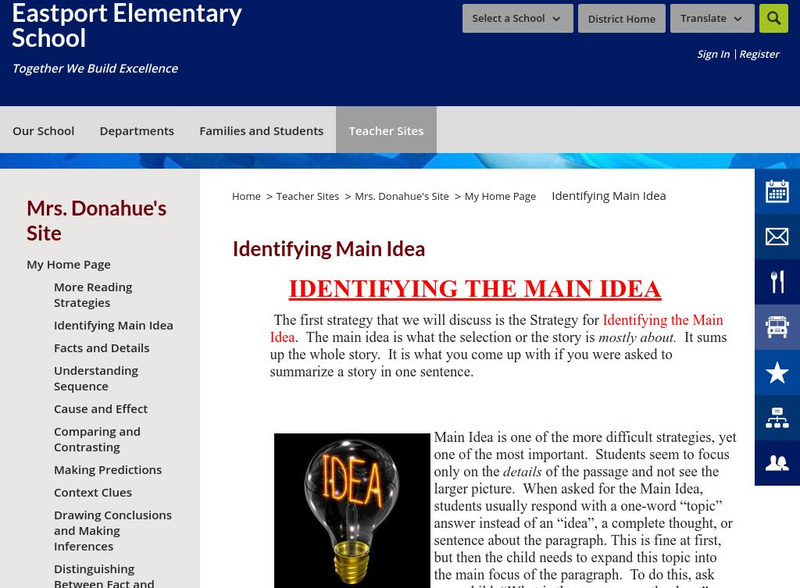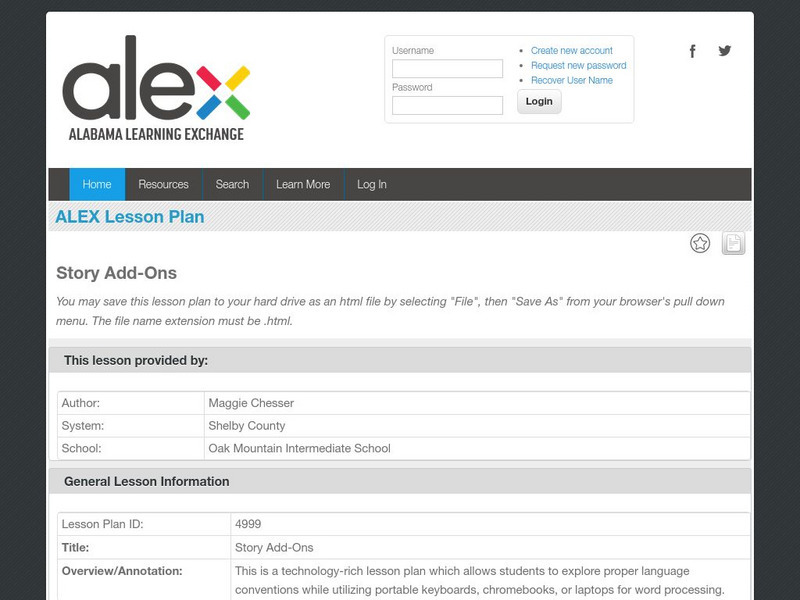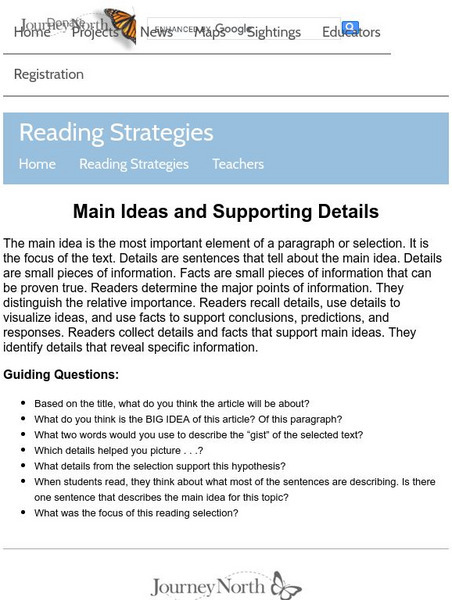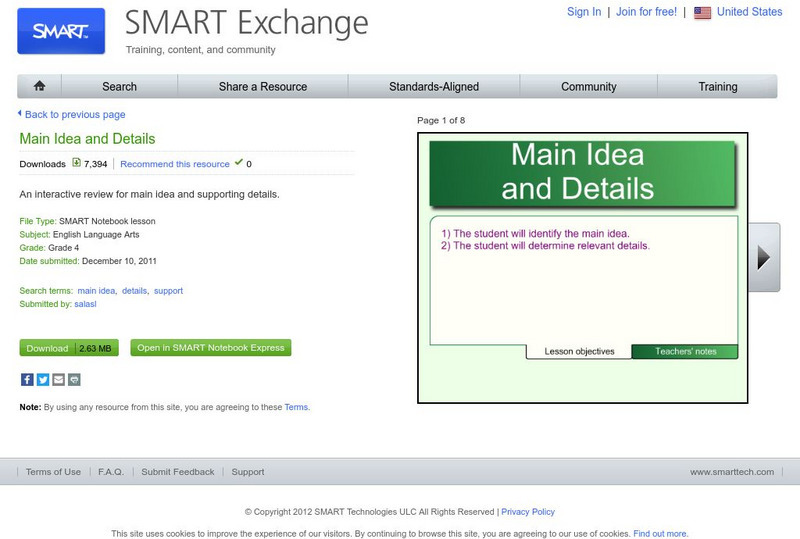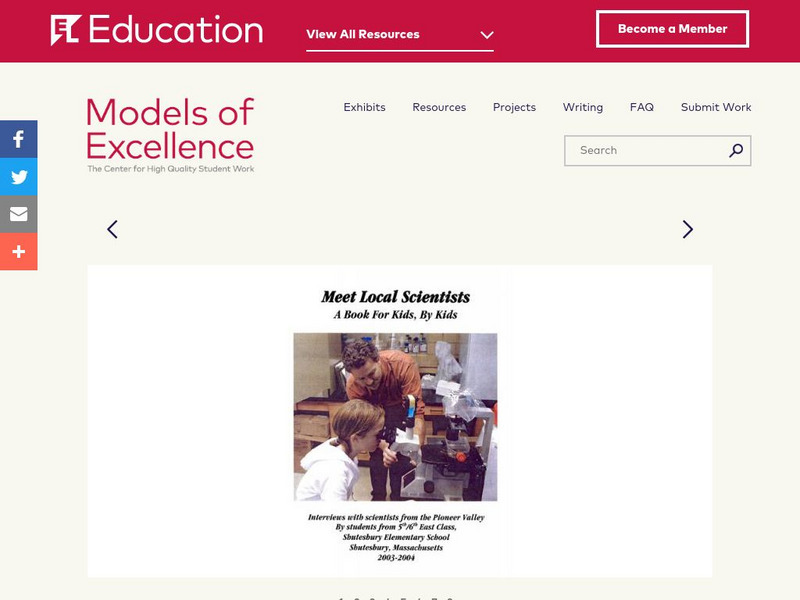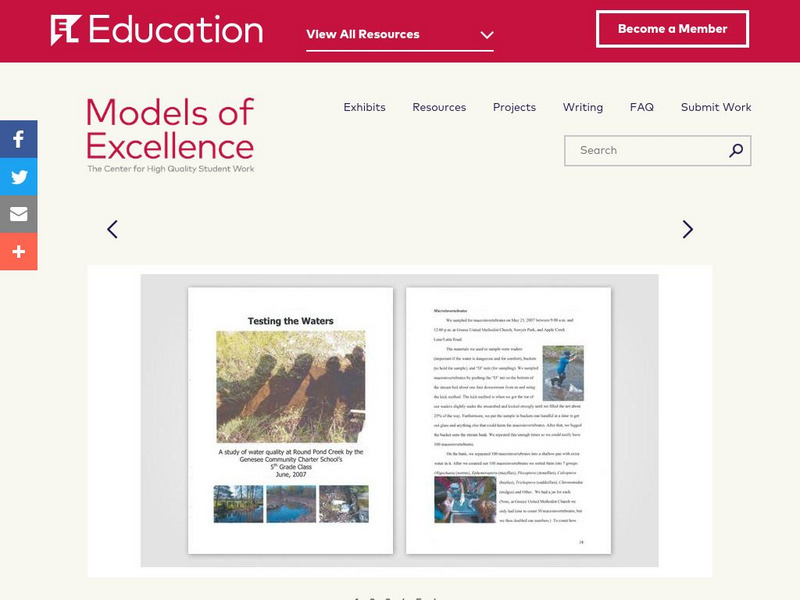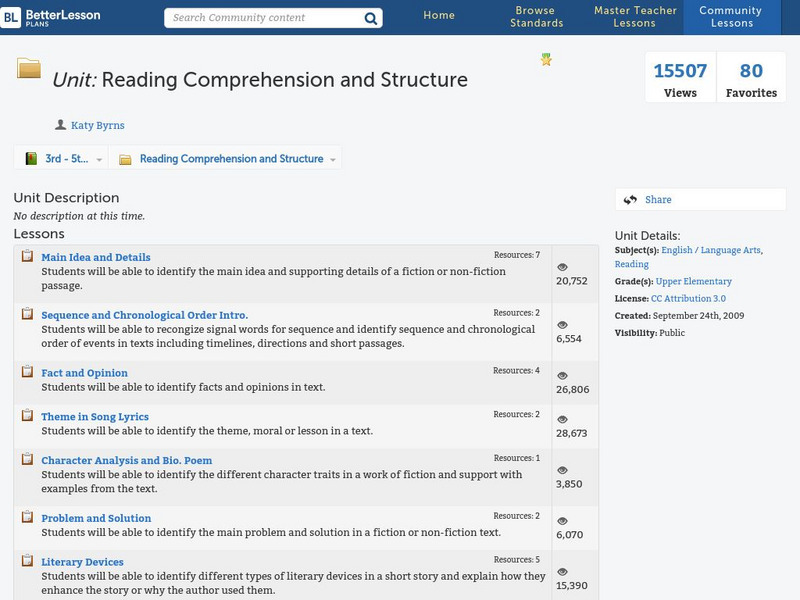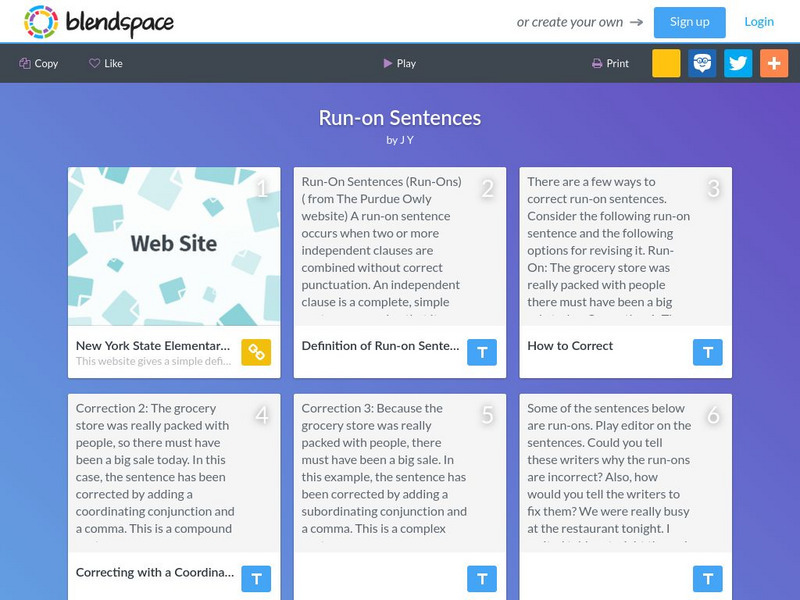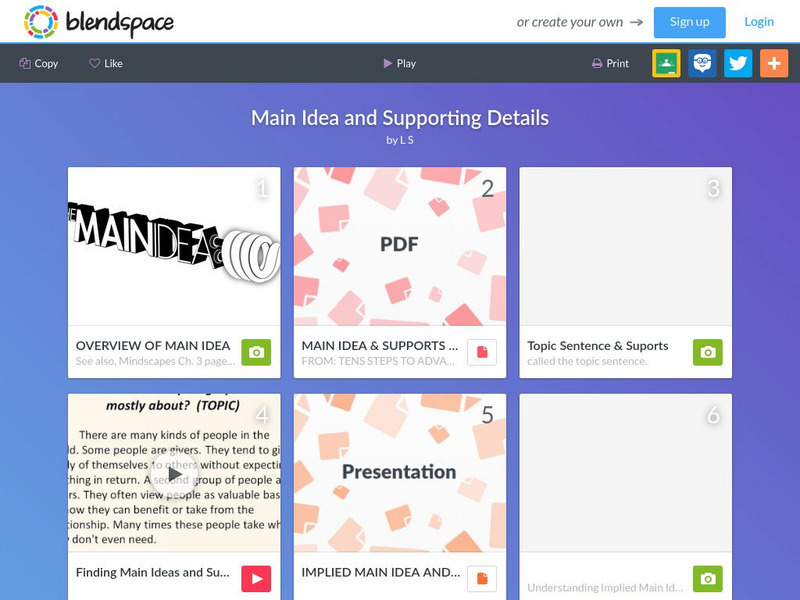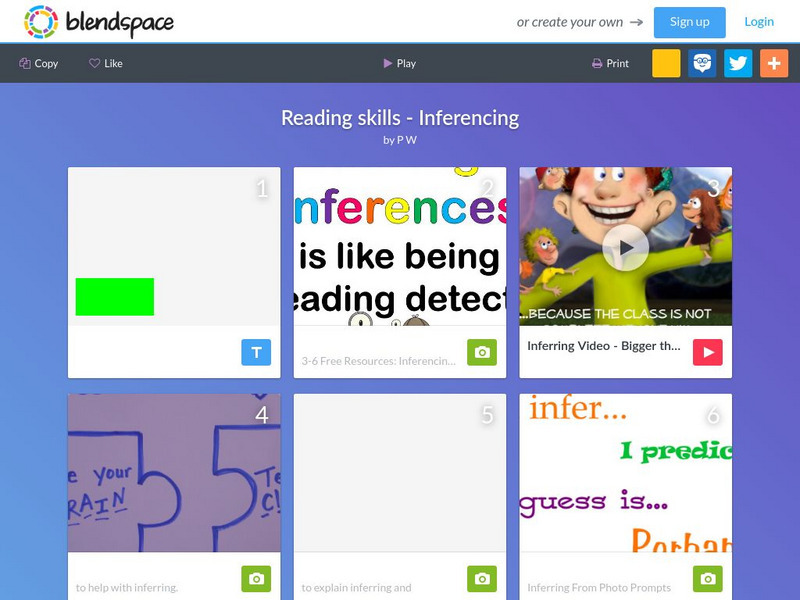ArtsNow
Arts Now Learning: Personal Storytelling With Accordion Books [Pdf]
In this lesson plan, young scholars use the structure of an accordion book to identify parts of an essay: introduction, three supporting details, and conclusion. They then compose a personal story using events from the past school year...
Other
Eastport Elementary School: Mrs. Donahue's Site: Identifying the Main Idea
Information, examples, and practice passages to use while learning how to identify the main idea of an informational text.
CPALMS
Cpalms: Stand Tall: Using Evidence to Support Your Answers
This learning module has a series of screencast videos and practice exercises designed to teach students how to support their answers with details from the text.
Alabama Learning Exchange
Alex: Creating State Brochures
Students will work in pairs to research online and/or in print a chosen state and create a travel brochure incorporating the information gathered.
Alabama Learning Exchange
Alex: Better Living Through Science
This lesson involves research on scientists whose accomplishments have impacted areas of nutrition, sanitation, or health care. Students will research an area of their choice, record information on a graphic organizer, and use the...
Alabama Learning Exchange
Alex: Persuasive Writing: You Are What You Eat
Students will write a persuasive essay trying to convince their audience to eat healthy. Students will use the Makes Sense Strategies to complete the instructional activity. [Requires Adobe Reader.]
Alabama Learning Exchange
Alex: Descriptive Essay
Students learn to use one-main-idea think-sheets when producing simple descriptive essays.
Alabama Learning Exchange
Alex: Story Add Ons
This is a technology-rich lesson plan which allows students to explore proper language conventions while utilizing portable keyboards for word processing.
Writing Fix
Writing Fix: Hamburger Paragraph Template for Students [Pdf]
This is a PDF hambuger template (graphic organizer) to help students organize and write stronger paragraphs.
ACT360 Media
Writing Den: Supporting Details
A short explanation and example of supporting sentences, what they do, and how to write them.
Other
Ccss Literacy E Handbook: Informational Text: Use Details and Examples
A short explanation of how to use explicit details in an informational text to make inferences. Click on Model at the bottom right to see a model with examples.
Other
Ccss Literacy E Handbook: Informational Text: Compare Perspectives
A short explanation of the difference between a firsthand account and a secondhand account.
Other
Ccss Literacy E Handbook: Informational Text: Reasons and Evidence in Text
A short explanation of using reasons and evidence as supporting details. Click the link to see a model of how to identify reasons and evidence in an informational text. Click on the Model button on the bottom right to see a model.
Quia
Quia: Metaphor Quiz
Read five short paragraphs and choose the main idea of each. Check the answers when finished to see how many were right.
Annenberg Foundation
Annenberg Learner: Journey North: Reading Strategies: Main Ideas and Supporting Details
Learn how to identify the main ideas and supporting details in an informational text by using a list of guiding questions.
SMART Technologies
Smart: Main Idea and Details
The interactive lesson is a review of main idea and supporting details.
Education Place
Houghton Mifflin: Eduplace: Persuasion Map [Pdf]
Use this graphic organizer to help build a persuasive piece of writing.
EL Education
El Education: Meet Local Scientists
Students learn about local scientists through research, interviews, and brief internships. Then students create pages for a class book containing digital photographs and information about the scientist and his/her field of study.
EL Education
El Education: Testing the Waters
Students tested water at several sites in a local creek and write a scientific paper showing their testing and results. Scientific papers include an abstract, introduction, methods, results, and discussion including recommendations...
Better Lesson
Better Lesson: Unit: Reading Comprehension and Structure
This unit focuses on reading comprehension and structure. It includes lessons on the main idea and supporting details, theme, sequence, fact and opinion, literary devices, character, text features, inferences, organization of nonfiction,...
TES Global
Blendspace: Run on Sentences
A nine-part learning module including links to texts and images on run-on sentences and sentence fragments.
TES Global
Blendspace: Persuasive Writing
Work through nine links to videos, images, and graphic organizers to learn about persuasive writing.
TES Global
Blendspace: Main Idea and Supporting Details
An eight-part learning module with links to images, texts, videos, slides, and a quiz on identifying the main idea and supporting details within a text.
TES Global
Blendspace: Reading Skills Inferencing
A twelve-part learning module with links to texts, images, and videos with information and examples of how to make inferences.


![Arts Now Learning: Personal Storytelling With Accordion Books [Pdf] Lesson Plan Arts Now Learning: Personal Storytelling With Accordion Books [Pdf] Lesson Plan](https://d15y2dacu3jp90.cloudfront.net/images/attachment_defaults/resource/large/FPO-knovation.png)
